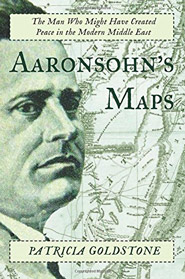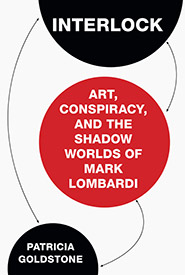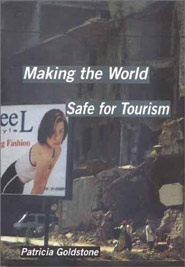Patricia Goldstone
author, playwright, journalist
Patricia Goldstone
author, playwright, journalist
Aaronsohn’s Maps
 Scientist, diplomat, and spy, Aaron Aaronsohn was one of the most extraordinary figures in the early struggle to create a homeland for the Jews.
Scientist, diplomat, and spy, Aaron Aaronsohn was one of the most extraordinary figures in the early struggle to create a homeland for the Jews.
Born to Jewish settlers in Palestine, he ran a network of spies during World War I with his sister Sarah that enabled the British to capture Jerusalem and made Aaron T. E. Lawrence’s rival in an astonishing triangle: there is evidence that beautiful, rebellious Sarah, who died tragically in 1917, was the only woman Lawrence ever loved.
A rugged adventurer, Aaronsohn became convinced during his explorations of the Middle East that water would govern the region’s fate. He compiled both the area’s first detailed water maps and a plan for Palestine’s national borders that predicted and — in its insistence on partnership between Arabs and Jews — might have prevented the decades of conflict to come.
But the taste for power that drew Aaron from science to politics led to his premature and mysterious death in 1919. His maps were lost, his library was destroyed, and his story obscured.
A history that speaks directly to the present, Aaronsohn’s Maps reveals for the first time Aaronsohn’s key role in establishing Israel and the enduring importance of Aaronsohn’s maps in Middle Eastern politics today.
Reviews of Aaronsohn’s Maps
Patricia Goldstone cuts a deep swath through Palestinian history with her new title, Aaronsohn’s Maps: The Untold Story of the Man Who Might Have Created Peace in the Middle East. Set primarily during World War I, Goldstone focuses on the life of Jewish agronomist Aaron Aaronsohn, who traveled as a small child to Palestine with his Romanian parents ahead of a wave of pogroms in 1882. What they found there in a country then under the control of the Ottoman Empire was a complicated social system where most of the Jewish residents “subsisted on the Halukah; alms collected from Jews on all five continents to encourage their coreligionists in the Holy Land to pray for them.” There was discord already between the two primary native groups over the dispersal of the Halukah before the flood of Jews from Eastern Europe that the Aaronsohns were part of arrived. The new immigrants complicated things as they were often more entrepreneurial and brought with them a different way of life. Also, most of them were fleeing ghettos and were determined not to be in a position of dependence ever again. Political conflict within this complicated mixture commenced immediately and the Aaronsohns showed themselves to be especially independent, a trait that Aaron proudly exhibited for the rest of his short life.
After growing up in Palestine, Aaron Aaronsohn became a scientist who was deeply concerned about the water supply in the region. He set out to create a hydrographic map that he believed could be used to develop permanent borders for the various regions in the wake of the Ottoman Empire’s fall. During the war his expertise was courted by various individuals, from the Turkish leader of Palestine, to leaders of the international Zionist movement and British military leaders who actively sought control of Palestine as part of multiple and conflicting partition agreements that were made with various factions. Water became increasingly significant in the arguments put forth at the war’s end by the major powers as they sought to carve up the area. As diplomat Harold Nicholson put it, the atmosphere at the post war conferences was like “a riot in a parrot house.”
In the midst of all of this Aaron Aaronsohn stood as someone apart from the fray; as a Jew actually from Palestine, an agriculture expert who had worked with the Ottoman Empire, and a scientist who had studied with various European agronomists, he believed firmly that Jews and Arabs had to work together in an equal relationship if the Middle East had any hope of surviving. In this respect he ran headlong into conflict with Zionist David Ben-Gurion, who was one of the founders of Israel and insisted that Jews employ only Jews. Aaronsohn all too often found himself pushed aside by various groups who all saw their own vision for Palestine and refused to listen to the more centrist view proposed by a man who saw the region not as a Biblical homeland but a place on earth with its own unique climate concerns.
Aaronsohn hoped that Britain could exert the calming influence needed to construct borders with care. Although he had few other options, he was sadly disappointed by the outcome of all his hard work on the political front as fewer and fewer cooler heads prevailed. When he was killed in an unexplained plane crash under dubious circumstances on May 15, 1919, so went one of the few men who could have pointed out the folly of British and French designs on the Middle East. The accident, which also killed the pilot, was never fully investigated.
Beyond all the politics of the early 20th century emigration to Palestine and the changes brought by World War I, Goldstone also writes about Aaronsohn’s interactions with T.E. Lawrence (“Lawrence of Arabia”) and the death of Aaronsohn’s sister Sarah, the “Jewish Joan of Arc.” Sarah Aaronsohn was a key player in a group of Palestinian Jewish operatives who provided intelligence to the British throughout the war. When the group was discovered by the Turks it resulted in a round of torture and death that is graphically depicted in the book; particularly in the case of Sarah, who suffered agonies that are barely describable before she was able to locate a hidden weapon and end her own life. Goldstone suggests that Sarah and Lawrence might have had a relationship far beyond that acknowledged by their families and presents the spy as a realistic candidate for the mysterious “S.A” to whom Lawrence dedicated his book, The Seven Pillars of Wisdom. I will admit that Sarah makes a lot more sense than many others who have been put forth as the source of Lawrence’s attention (and the very romantic poem he wrote for S.A. in Pillars), but the author did make me a tad uncomfortable when suggesting that Lawrence’s famous recollection of torture at the hands of the Turks did not really happen and he merely stole Sarah’s pain for his own. It seems odd to suggest that on the one hand he loved her (or at least cared deeply for her) yet on the other co-opted her tragedy for his own gain. Goldstone freely admits that much of Lawrence is unknown, including the endless speculation surrounding his death, and wrinkles with Sarah Aaronsohn just provide more possibilities to consider.
Goldstone ends her book with a chapter about the current struggles for water rights between the Israelis, Palestinians, Jordanians and Syrians, proving that Aaronsohn was right all along. And believe it or not, Haliburton has actually entered into this mess, suggesting the Turks export water to the region in a pipeline that they, of course, would be key in designing and building. Somewhere, someone is laughing at the idea of Haliburton being the savior of so many conflicted countries.
The author makes a strong argument for so many of the fights over religion masking the real problem as she writes:
The coastal aquifers, especially in the politically critical Gaza area in which almost 1.4 million Palestinians have been penned, are strenuously overpumped, with seawater intrusions an increasingly serious problem. To the Palestinians, water is the most obvious symbol of their economic oppression: many of the fights in the Occupied Territories have started over the fresh green lawns, irrigated flower beds, and sparkling swimming pools of the Jewish settlers, while nearby Palestinian villagers are denied drilling rights and have running water, polluted by sewage, only one day every few weeks. The Palestinians complain that even if the Oslo Accords had been followed to the letter, they would have given Israeli water authorities a lock on water resources. The intractability of politicians has thus created a series of boxes from which it is now almost impossible to escape.
Aaron Aaronsohn was not perfect, and Goldstone is honest about his personal pitfalls. But he clearly saw the land he loved through a lens that allowed a great deal more realism and honesty then most of those who came to it. He saw it simply as land, and not as the bearer of so much human baggage that it has proven unable to support and cannot endure. Goldstone recounts that after his death President Wilson’s special envoy to the Paris Peace Conference wrote: “The Jewish race had many brilliant leaders but when Aaron died I believe that it lost the man who, before all others, could kindle the hearts and minds of other nations to achieve sympathy. And not Zion alone will suffer for his loss.”
— Colleen Mondor, Bookslut, May 2008
AARON Aaronsohn’s fascinating story will come as a major surprise to most students of Middle Eastern history. The early 20th-century agronomist and hydrologist’s exploits easily rivalled those of T.E. Lawrence, the fabled Lawrence of Arabia. But only students of British foreign policy and devotees of the many intrigues involved in the conquest and dismantling of the Ottoman Turkish Empire, preceding and during the First World War, will have heard of him.
American journalist Patricia Goldstone would have readers believe that Aaronson had a superb master plan for pre-British mandatory Palestine that would have led to peaceful co-existence between the Israelis and their Arab neighbours. “What this superman wanted,” she writes, “was an independent Palestine, free from debt and the Great Powers — and grounded in an egalitarian relationship between Jews and Arabs.” …
Goldstone’s treatise is, in many respects, a tour de force. She has done her research and her writing style, at times flamboyant, is always arresting. She doesn’t hesitate to share her firm views on the huge number of issues and events she describes, which cover the period from the 1845 right up to today.
She effectively tells Aaronsohn’s story as scientist, diplomat and spy. …
— Harold Buchwald is a Winnipeg lawyer and columnist who has an abiding interest in Middle Eastern affairs / ‘What’s On Winnipeg’
Whatever happened to Aaron Aaronsohn, scientist, ecumenical patriot and spy?
Felix Frankfurter muttered that a “bloodstained hand” had silenced him, as it had his spy sister. And thus opens journalist/historian Goldstone’s spry scholarly detective story.
Aaronsohn, an émigré to Palestine, recognized that only with the help of the native Arabs would the Jewish people be able to make a homeland. He busied himself working on agriculture improvement projects and puzzling out the mysteries of the region’s hidden waters, all the while tucking away all sorts of useful information into his capacious mind.
When World War I broke out, he began to deliver that information to the British, eager to help free Palestine from its Ottoman masters; the information he provided was of as much material use as were T. E. Lawrence’s raids in the eastern desert, which may have brought the two into the same orbit: Goldstone speculates, intriguingly, that the “S. A.” to whom Lawrence dedicated Seven Pillars of Wisdom was Aaronsohn’s sister Sarah. (As for Lawrence of Arabia’s version of history, Goldstone notes that Robert Graves insisted that Lawrence was straight.)
Though their perils, too, “seemed made for the big screen,” the Aaronsohns operated with quiet efficiency throughout the war; as Goldstone writes, though courageous, Aaron “relied on his scientific knowledge as the basis for his intelligence” and used water as a weapon in the campaign to take Damascus, all the while maneuvering carefully to further the emergence of a Zionist state.
Sarah was caught and tortured to death “without having revealed a thing to the Turks” while her brother was in London awaiting the Balfour Declaration; the victim of a mysterious airplane crash over the English Channel, he would soon disappear not just from the world, but from history.
Much superior to Ronald Florence’s Lawrence and Aaronsohn (2007). Goldstone honors both Aaronsohns, closing with notes on how Aaron’s plans for equitable water rights in Palestine might have led to peace today.
— Kirkus Review, June 15, 2007
Patricia Goldstone… has come up with a well-researched, resourceful, politically balanced…account of the life of the man who made the fatal mistake of taking issue with the leaders of the Zionist movement…
Hers is the first true biography.”
— H.V.F. Winstone, author of ‘The Illicit Adventure’
How we got to the Middle East of today is at the heart and soul of “Aaronsohn’s Maps: The Untold Story of the Man Who Might Have Created Peace in the Middle East.”
Goldstone has dug deep to come up with the bio of the agronomist, diplomat and spy who helped found Israel. There’s more than a touch of T.E. Lawrence in this child of Jewish settlers in Palestine: Aaron Aaronsohn’s spy network helped the British take Jerusalem in World War I; he compiled the first maps of water in the arid region; his sister, also a spy and possibly Lawrence’s lover, was captured and tortured to death. Aaronsohn died in a plane crash in 1919; his vision for a peaceful Middle East died as well.
— Martin Zimmerman, San Diego Union-Tribune
It doesn’t often happen that two really solid history books arrive simultaneously about almost the same subject, and at a time when so many opportunities for peace in the Middle-East have been lost both are appropriate and important reading.
‘Lawrence of Arabia*’ gets all ‘the press,’ but it was Aaron Aaronsohn who presented one of the finest lost opportunities to create peaceful understanding…
Suffice to say that these are both important histories, soundly and extensively researched and will be found to be a necessity of any well-stocked bookshelf of Middle-Eastern history. Insofar as reading enjoyment is concerned – ‘Aaronsohns Maps’ breaks some new ground of Modern Israeli history that has rarely been covered elsewhere.
…. Aaronsohns ideas, had they arrived to fruition, might have actually created peace in the area, due to his very practical schemes for the sharing of water and other resources of the region. Lawrence, on the other hand, had no pragmatic capability toward actually conjoining the constantly feuding and warring Arab clans whose shared hate for the infidels and Jews remain their main reason of any cooperation between themselves.”
— Aharon ben Anshel, Jewish Press, November 2007
Different types of Zionism — There are as many ways to interpret history as there are people in the world, and then some. Yet most people think that their version is the most accurate, factual, etc. If you fall into this camp, then reading the following books should at least persuade you to be more open to other worldviews.
Mideast water intrigue — You can’t dispute that (Patricia Goldstone) tells an interesting story…
Goldstone writes that she began work on this book just prior to the Iraq war and she, and other researchers, was “denied access to the main body of British archival material relating to Aaron’s activities for the Eastern Mediterranean Special Intelligence Bureau on the grounds that the same methods are still in use today.” As well, documents were lost when Aaronsohn’s plane went missing after taking off from Kenley, England, on May 15, 1919.
And then there is the sheer difficulty in reconstructing anyone’s life based on what material has survived their death and the decades following. So, Goldstone is left to make conjectures about several important matters, in particular, that Aaronsohn’s maps could have changed the violent course of Israeli-Palestinian relations…
Aaronsohn’s Maps is truly engaging. It reads well, albeit more like a novel or an extended opinion piece than a biography. The discussion of the importance of a railway through the Middle East is particularly fascinating, as are the diplomatic machinations around the First World War, the intra-Jewish politics and the vastly different visions of Zionism at the turn of the last century.
— The Jewish Independent, September 7, 2007
©2023 Patricia Goldstone ~ Designed by Mesa Multimedia





